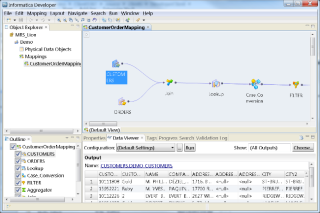Cómo instalar osTicket en FreeBSD 12
¿Usando un sistema diferente? osTicket es un sistema de tickets de soporte al cliente de código abierto. El código fuente de osTicket está alojado públicamente en Github. En este tutorial
Alfresco Community Edition is an open source version of the Alfresco Content Services. It is written in Java and uses PostgreSQL to store its database. Alfresco is an enterprise content management system for many types of digital assets such as documents, records, web, images, videos and more. It is also used for collaborative content development. The file repository of your hosted Alfresco can be accessed using SMB, WebDAV, FTP and CIMS. Searching through the files is powered by Apache Solr.
For this tutorial, we will use 192.168.0.1 as the public IP address and share.example.com as the domain name pointed towards the Vultr instance. Please make sure to replace all occurrences of the example domain name and public IP address with the actual one.
Update your base system using the guide How to Update Ubuntu 16.04. Once your system has been updated, proceed to install the dependencies.
Alfresco provides a ready to install binary installer package which contains all the software required to run the application. However, we need to install a few dependencies to support the LibreOffice plugin.
sudo apt -y install fontconfig libsm-dev libice-dev libxt-dev libxrender-dev libxext-dev cups libglu1-mesa-dev libcairo2-dev libgl-dev
sudo ln -s /usr/lib/x86_64-linux-gnu/mesa/libGL.so.1 /usr/lib/x86_64-linux-gnu/libGL.so.1
Download the installer package from the Alfresco website. You can always find the link to the latest installer on the Alfresco download page.
wget https://download.alfresco.com/release/community/201707-build-00028/alfresco-community-installer-201707-linux-x64.bin
Provide execution permissions to the installer file.
sudo chmod +x alfresco-community-installer-201707-linux-x64.bin
Start the installation.
sudo ./alfresco-community-installer-201707-linux-x64.bin
Select the language of the installation. For the installation type, you can choose the first one which says "Easy install". This will install the application with the default configuration.
Choose the default location, /opt/alfresco-community, for the installation of the application.
Specify the administrator password and choose "Y" for the installation as a service. This will create a startup service to easily start and manage the application process.
Note: Alfresco recommends at least 2 CPUs and 4GB RAM. If your system does not have the recommended configuration, you might get a warning saying the environment is not configured optimally for Alfresco Content Services. You can, however, still proceed with the installation.
The installation of the application should start now. Once the application is installed, you will be asked if you want to launch Alfresco Community server. If you choose "Y", the application will start the server immediately and you will see the following output.
Launch Alfresco Community [Y/n]: y
waiting for server to start.... done
server started
/opt/alfresco-community/postgresql/scripts/ctl.sh : postgresql started at port 5432
Using CATALINA_BASE: /opt/alfresco-community/tomcat
Using CATALINA_HOME: /opt/alfresco-community/tomcat
Using CATALINA_TMPDIR: /opt/alfresco-community/tomcat/temp
Using JRE_HOME: /opt/alfresco-community/java
Using CLASSPATH: /opt/alfresco-community/tomcat/bin/bootstrap.jar:/opt/alfresco-community/tomcat/bin/tomcat-juli.jar
Using CATALINA_PID: /opt/alfresco-community/tomcat/temp/catalina.pid
Tomcat started.
/opt/alfresco-community/tomcat/scripts/ctl.sh : tomcat started
Since the installer also added a startup service, you can also start the application.
sudo systemctl start alfresco
By default, Alfresco starts the Tomcat web server to serve the application on the port 8080. Open your favorite browser and go to http://192.168.0.1:8080/share, you will see the Alfresco landing page.
By default, Alfresco's Tomcat server listens to the port 8080. In this tutorial, we will use Nginx as the reverse proxy so that the application can be accessed via the standard HTTP and HTTPS ports. We will also configure Nginx to use an SSL generated with Let's Encrypt.
Install Nginx.
sudo apt -y install nginx
Start Nginx and enable it to automatically start at boot time.
sudo systemctl start nginx
sudo systemctl enable nginx
Add the Certbot repository.
sudo add-apt-repository --yes ppa:certbot/certbot
sudo apt-get update
Install Certbot, which is the client application for Let's Encrypt CA.
sudo apt -y install certbot
Note: To obtain certificates from Let's Encrypt CA, the domain for which the certificates are to be generated must be pointed towards the server. If not, make the necessary changes to the DNS records of the domain and wait for the DNS to propagate before making the certificate request again. Certbot checks the domain authority before providing the certificates.
Generate the SSL certificates.
sudo certbot certonly --webroot -w /var/www/html -d share.example.com
The generated certificates are likely to be stored in /etc/letsencrypt/live/share.example.com/. Let's Encrypt certificates expire in 90 days, hence it is recommended to set up auto-renewal of the certificates using Cron jobs.
Open the cron job file.
sudo crontab -e
Add the following line at the end of the file.
30 5 * * * /usr/bin/certbot renew --quiet
The above cron job will run every day at 5:30 AM. If the certificate is due for expiration, it will automatically be renewed.
Edit Alfresco's Tomcat server configuration file.
sudo nano /opt/alfresco-community/tomcat/conf/server.xml
Find the following lines.
<Connector port="8080" URIEncoding="UTF-8" protocol="HTTP/1.1"
connectionTimeout="20000"
redirectPort="8443" maxHttpHeaderSize="32768" />
Add the line proxyPort="443" scheme="https" in the above configuration block so that it looks like the block shown below.
<Connector port="8080" URIEncoding="UTF-8" protocol="HTTP/1.1"
connectionTimeout="20000"
redirectPort="8443" maxHttpHeaderSize="32768"
proxyPort="443" scheme="https" />
Open the Alfresco default configuration file.
sudo nano /opt/alfresco-community/tomcat/shared/classes/alfresco-global.properties
Find the following lines.
alfresco.context=alfresco
alfresco.host=127.0.0.1
alfresco.port=8080
alfresco.protocol=http
share.context=share
share.host=127.0.0.1
share.port=8080
share.protocol=http
...
system.serverMode=UNKNOWN
Change the above lines according to your system. It should look like what is shown below.
alfresco.context=alfresco
alfresco.host=share.example.com
alfresco.port=443
alfresco.protocol=https
share.context=share
share.host=share.example.com
share.port=443
share.protocol=https
...
system.serverMode=PRODUCTION
Create a new server block file for Alfresco.
sudo nano /etc/nginx/sites-available/alfresco
Populate the file.
server {
listen 80;
server_name share.example.com;
return 301 https://$host$request_uri;
}
server {
listen 443;
server_name share.example.com;
ssl_certificate /etc/letsencrypt/live/share.example.com/fullchain.pem;
ssl_certificate_key /etc/letsencrypt/live/share.example.com/privkey.pem;
ssl on;
ssl_session_cache builtin:1000 shared:SSL:10m;
ssl_protocols TLSv1 TLSv1.1 TLSv1.2;
ssl_ciphers HIGH:!aNULL:!eNULL:!EXPORT:!CAMELLIA:!DES:!MD5:!PSK:!RC4;
ssl_prefer_server_ciphers on;
access_log /var/log/nginx/alfresco.access.log;
location / {
root /opt/alfresco-community/tomcat/webapps/ROOT;
proxy_set_header X-Real-IP $remote_addr;
proxy_set_header X-Forwarded-For $proxy_add_x_forwarded_for;
proxy_set_header X-Forwarded-Proto $scheme;
proxy_set_header Host $http_host;
proxy_http_version 1.1;
proxy_pass http://localhost:8080;
proxy_redirect default;
}
location /share/ {
root /opt/alfresco-community/tomcat/webapps/share/;
proxy_set_header X-Real-IP $remote_addr;
proxy_set_header X-Forwarded-For $proxy_add_x_forwarded_for;
proxy_set_header X-Forwarded-Proto $scheme;
proxy_set_header Host $http_host;
proxy_http_version 1.1;
proxy_pass http://localhost:8080/share/;
proxy_redirect http:// https://;
}
location /alfresco/ {
root /opt/alfresco-community/tomcat/webapps/alfresco/;
proxy_set_header X-Real-IP $remote_addr;
proxy_set_header X-Forwarded-For $proxy_add_x_forwarded_for;
proxy_set_header X-Forwarded-Proto $scheme;
proxy_set_header Host $http_host;
proxy_http_version 1.1;
proxy_pass http://localhost:8080/alfresco/;
proxy_redirect http:// https://;
}
}
Activate the configuration file.
sudo ln -s /etc/nginx/sites-available/alfresco /etc/nginx/sites-enabled/alfresco
Restart the web server and Alfresco so that the changes in the configuration can take effect.
sudo systemctl restart nginx alfresco
Alfresco is now installed and configured on your server. You can access the Alfresco modules at the following address.
https://share.example.com/alfresco
To access the Alfresco share services, visit the following address.
https://share.example.com/share
Log in using the initial administrator account, admin and the password you have chosen during installation.
Congratulations, Alfresco community edition is now installed on your server.
¿Usando un sistema diferente? osTicket es un sistema de tickets de soporte al cliente de código abierto. El código fuente de osTicket está alojado públicamente en Github. En este tutorial
¿Usando un sistema diferente? osTicket es un sistema de tickets de soporte al cliente de código abierto. El código fuente de osTicket está alojado públicamente en Github. En este tutorial
Using a Different System? Matomo (formerly Piwik) is an open source analytics platform, an open alternative to Google Analytics. Matomo source is hosted o
Using a Different System? Osclass is an open source project that allows you to easily create a classified site without any technical knowledge. Its sourc
Using a Different System? Matomo (formerly Piwik) is an open source analytics platform, an open alternative to Google Analytics. Matomo source is hosted o
¿Usando un sistema diferente? X-Cart es una plataforma de comercio electrónico de código abierto extremadamente flexible con toneladas de características e integraciones. El código fuente de X-Cart es hoste
Using a Different System? Microweber is an open source drag and drop CMS and online shop. Microweber source code is hosted on GitHub. This guide will show yo
Using a Different System? Mailtrain is an open-source self hosted newsletter app built on Node.js and MySQL/MariaDB. Mailtrains source is on GitHub. Thi
Using a Different System? Matomo (formerly Piwik) is an open source analytics platform, an open alternative to Google Analytics. Matomo source is hosted o
Using a Different System? Mailtrain is an open-source self hosted newsletter app built on Node.js and MySQL/MariaDB. Mailtrains source is on GitHub. Thi
Using a Different System? Mailtrain is an open-source self hosted newsletter app built on Node.js and MySQL/MariaDB. Mailtrains source is on GitHub. Thi
¿Usando un sistema diferente? Taiga es una aplicación gratuita y de código abierto para la gestión de proyectos. A diferencia de otras herramientas de gestión de proyectos, Taiga utiliza un incre
Using a Different System? osTicket is an open-source customer support ticketing system. osTicket source code is publicly hosted on Github. In this tutorial
¿Usando un sistema diferente? Alfresco Community Edition es una versión de código abierto de Alfresco Content Services. Está escrito en Java y usa PostgreSQL t
Using a Different System? Introduction Akaunting is a free, open source and online accounting software designed for small businesses and freelancers. It i
¿Usando un sistema diferente? Zammad es un sistema de asistencia / tickets de código abierto diseñado para equipos de atención al cliente. Con Zammad, servicio al cliente
Using a Different System? Akaunting is a free, open source and online accounting software designed for small businesses and freelancers. It is built wit
Using a Different System? InvoicePlane is a free and open source invoicing application. Its source code can be found on this Github repository. This guid
Using a Different System? Matomo (formerly Piwik) is an open source analytics platform, an open alternative to Google Analytics. Matomo source is hosted o
ZPanel, un panel de control de alojamiento web popular, se bifurcó en 2014 a un nuevo proyecto llamado Sentora. Aprende a instalar Sentora en tu servidor con este tutorial.
Aprende cómo instalar Vtiger CRM, una aplicación de gestión de relaciones con el cliente, en CentOS 7 para aumentar tus ventas y mejorar el servicio al cliente.
Esta guía completa le mostrará cómo configurar un servidor Counter-Strike 1.6 en Linux, optimizando el rendimiento y la seguridad para el mejor juego. Aprende los pasos más recientes aquí.
Los ataques de ransomware van en aumento, pero ¿puede la IA ayudar a lidiar con el último virus informático? ¿Es la IA la respuesta? Lea aquí, sepa que la IA es una bendición o una perdición
ReactOS, un sistema operativo de código abierto y gratuito, está aquí con la última versión. ¿Puede satisfacer las necesidades de los usuarios de Windows de hoy en día y acabar con Microsoft? Averigüemos más sobre este estilo antiguo, pero una experiencia de sistema operativo más nueva.
Whatsapp finalmente lanzó la aplicación de escritorio para usuarios de Mac y Windows. Ahora puede acceder a Whatsapp desde Windows o Mac fácilmente. Disponible para Windows 8+ y Mac OS 10.9+
Lea esto para saber cómo la Inteligencia Artificial se está volviendo popular entre las empresas de pequeña escala y cómo está aumentando las probabilidades de hacerlas crecer y dar ventaja a sus competidores.
Recientemente, Apple lanzó macOS Catalina 10.15.4, una actualización complementaria para solucionar problemas, pero parece que la actualización está causando más problemas que conducen al bloqueo de las máquinas Mac. Lee este artículo para obtener más información
13 Herramientas comerciales de extracción de datos de Big Data
Nuestra computadora almacena todos los datos de una manera organizada conocida como sistema de archivos de diario. Es un método eficiente que permite a la computadora buscar y mostrar archivos tan pronto como presiona buscar.




